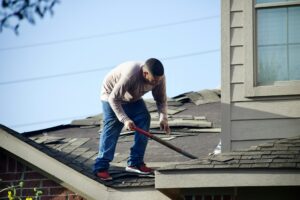The Future of Saving Energy with Advanced Windows
Homes and buildings are transforming at a rapid pace, especially when it comes to energy efficiency. Windows have become an essential frontier in this transformation: they set the stage for comfort, natural light, and cost savings. As we move toward 2025, the next generation of windows promises a deeper level of insulation, intelligent coatings, and overall enhanced performance.
In this guide, you will discover why switching to advanced windows now sets your home on a path of reduced costs, improved indoor climate, and a smaller environmental impact. Energy bills don’t have to be a necessary burden when you can let technology help lighten the load. By understanding the latest trends, materials, and technology, you can choose windows that align with your long-term financial and sustainability goals.
Why Window Efficiency Matters
Energy-efficient windows help your home maintain a stable temperature, minimizing the strain on heating or cooling systems. This stability means your home stays comfortable whether you live in a region of freezing winters or sizzling summers. It also translates into lower utility bills as your HVAC system can run less frequently and more efficiently.
Better indoor temperature management isn’t the only perk. High-performance windows also reduce condensation and noise pollution. Modern designs incorporate tight seals and inert gas fillings between panes, making them better at blocking sound from busy roads, airports, or neighborhood commotion. By keeping unwanted noise out, you can enjoy a more peaceful living space while still benefiting from natural daylight.
How Window Technology Has Evolved
Window innovation is driven by a growing push for sustainability, stricter building codes, and the desire for minimal maintenance. Over the past few decades, traditional windows have gradually given way to double-pane and triple-pane systems. Layered glass, sealed edges, and advanced coatings now work together to offer better insulation than ever before.
Today’s best models include specialized glazes that reflect infrared light and keep harmful ultraviolet rays at bay. Low-E (low emissivity) coatings act as microscopic mirrors, reflecting heat back to its source and keeping spaces cooler in summer and warmer in winter. Moreover, windows are steadily becoming smarter through the integration of sensors or dynamic glass that tints on demand. While still relatively new, these features hint at a future where windows can actively respond to changing light and climate conditions.
Understanding Key Features for 2025
Progress in window technology often revolves around maximizing insulation, durability, and adaptability. Below are some of the most critical features to look out for as you shop for windows designed to excel in 2025:
- Multiple Panes: Double- and triple-pane windows can vastly improve insulation, stabilize indoor temperatures, and minimize sound transfer. Triple-pane windows go one step further, slowing heat transfer significantly more than double-pane units in most conditions.
- Inert Gas Fill: Manufacturers often fill the gap between panes with argon or krypton, gases that lower heat transfer better than air alone. Krypton is typically more efficient but comes at a higher cost.
- Low-E Coating: A nearly invisible yet powerful layer that controls how heat travels through glass. This coating keeps radiant heat inside during cold weather and outside during hot weather, helping you save on both heating and cooling.
- Frame Material: Choices range from classic wood to modern fiberglass, vinyl, or composite. Fiberglass frames, for example, expand and contract much less than other materials, making them a popular choice for reducing air leaks over time.
- High R-Value or Low U-Factor: These ratings show how well a window insulates (R-value) and how much heat it conducts (U-factor). Look for windows with a lower U-factor if your main priority is reducing heat loss, or seek an R-value above 3 to 5 for enhanced comfort in colder climates.
- Airtight Seals: Beyond glazing and gas fills, the integrity of a window’s construction matters. Windows with multiple weatherstripping layers and advanced locking mechanisms can minimize heat loss and air infiltration.
For more insights on what these ratings mean, you can check out the National Fenestration Rating Council’s documentation for detailed guidance on measuring window performance. Another excellent source is the Efficient Windows Collaborative (https://www.efficientwindows.org), which offers a wealth of consumer-friendly information.
Top Window Options for 2025
Every home needs windows that align with its unique architectural style, climate zone, and budget. Below is a closer look at some top energy-efficient options poised to shine in 2025.
Fiberglass Windows with Triple Glazing
Fiberglass frames are valued for their rigidity and minimal thermal expansion. Coupled with triple-pane glass, these windows can deliver outstanding insulation and longevity. Although fiberglass windows typically cost more than vinyl, they often boast lower lifetime costs due to their superior durability. You can expect less warping, less need for repainting, and generally better performance in harsh weather.
Vinyl Frames with Double Low-E Coatings
Vinyl continues to be a popular window frame material due to its affordability and decent insulation properties. When paired with two layers of low-E coating on a double- or triple-pane glass system, vinyl frames can dramatically reduce heat transfer. These windows are relatively low maintenance, as vinyl resists moisture and won’t require frequent painting or sealing.
Hybrid Wood-Clad Designs
Wood remains an attractive option for many homeowners, thanks to its classic appearance and natural insulating qualities. Modern wood windows often incorporate aluminum or fiberglass cladding on the exterior to protect against weathering and reduce maintenance. The interior side can still showcase the organic warmth of wood, creating a balance between timeless aesthetics and efficient performance.
Smart Window Systems
A handful of manufacturers are integrating technology that adjusts tint in real-time, sometimes referred to as electrochromic or photochromic glass. These “smart” windows can autonomously darken when direct sunlight is intense, reducing glare and thermal gain. Although on the higher end of the price spectrum, these windows can make a substantial difference in daylight management, potentially lowering climate control costs over time. Their full potential is still emerging, but expect to see more brands experiment with this technology by 2025.
Low-Maintenance Composite Frames
Composite frames often combine materials like wood fibers or cellulose with synthetic polymers. They emulate the natural look of wood but offer heightened resistance to moisture and rotting. Composite windows stand out for long-term performance because they rarely warp or fade. They can also integrate well with high-performance glass packages and advanced low-E coatings for a solid energy-saving solution.
Navigating the Cost vs. Value Debate
For many homeowners, deciding on new windows is a significant investment. It’s essential to compare the upfront cost with the long-term benefits in terms of energy savings. While high-end materials like fiberglass or composite frames cost more initially, they can save considerably on utilities over time and may last longer with less maintenance.
Vinyl frames remain a cost-effective choice for those looking to strike a simpler balance between insulation and budget. Adding triple-pane glass might increase initial costs, but for those in colder climates, the energy savings can be substantial. Similarly, a lower-end vinyl or aluminum window might help with budget constraints in the short term, but you might need replacements sooner than with more durable options.
Also, consider local climate conditions and building codes. Efficient windows can help you qualify for rebates or tax incentives, offsetting some of the initial expense. Many states and municipalities encourage sustainable home upgrades to meet their own energy-reduction targets. A quick search on the U.S. Department of Energy’s website will often reveal federal and regional incentives that help reduce the financial burden of these upgrades.
Real-World Example
Ashley, a homeowner in a four-season climate with scorching summers and bitterly cold winters, decided to replace her single-pane windows with mid-range vinyl frames featuring triple-pane glass. She chose argon gas fills and a low-E coating tailored to reduce both summer heat gain and winter heat loss. Within the first year, her utility bills dropped by nearly 25%. That reduction more than covered her increased mortgage payment associated with the upgrade loan she obtained.
Not only did she see immediate savings, but the improved glazing and frame designs eased harsh drafts near the windows. Ashley also noticed a quieter interior on busy weekend mornings. When friends gathered in her living room, the difference in indoor comfort was evident: the windows let in daylight without making the space uncomfortably warm.
Maximizing Your Window Investment
Making the most of high-efficiency windows often involves paying attention to details beyond the glass and frame. Here are a few tips to extract maximum value:
- Proper Installation: Even the most advanced window can underperform if installed incorrectly. Ensure your installer has a track record of quality workmanship and understands your window’s specific air-sealing requirements.
- Appropriate Orientation: In new construction or major remodels, consider the cardinal directions and sun path. Positioning high-efficiency windows to optimize natural lighting while reducing harsh afternoon heat can significantly impact indoor comfort.
- Routine Maintenance: Keep frames and seals clean. Remove dirt buildup and regularly check for gaps in weatherstripping. A little preventative care can extend a window’s lifespan by years.
- Matching Local Climate: Not all windows are created for every environment. If you’re in a cold climate, prioritize top-tier insulation. In hot, sunny locales, select window coatings that guard against solar heat gain.
- Long-Term Perspective: While some options may cost more initially, they can pay off with improved comfort, durability, and reduced energy consumption. Evaluate factors like warranty coverage, repair costs, and prospective energy savings when making your final choice.
Immediate Steps Toward Sustainable Comfort
As you prepare for a future where every watt of energy counts, energy-efficient windows form a big part of the solution. They merge comfort, style, and eco-friendliness into one cohesive upgrade. Even if you aren’t ready to replace all your windows at once, prioritizing areas that see the most temperature fluctuation or that face direct sunlight can help you realize immediate gains.
Consult with local contractors experienced in installing advanced window designs. Explore the practical benefits of various frames, from fiberglass to composite, and weigh how the expanded costs might compare to your local rebates or long-term utility savings. Window manufacturers routinely update their offerings to meet stricter codes, so staying informed can help you stay ahead of the curve.
Transformation Through Smarter Choices
The evolution toward energy efficiency is steadily reshaping home design, and windows are right at the heart of that change. Once purely aesthetic features, they now hold the power to transform your home into a more liveable and cost-effective space. With advanced materials, coatings, and smart systems, windows continue to blend form and function for a positive environmental impact and improved indoor experience.
By investing in windows built for 2025, you’ll be making a strategic choice that resonates for years to come. Your monthly bills shrink, your carbon footprint lessens, and your lifestyle becomes more aligned with emerging standards of sustainability. With each step, windows that harness cutting-edge innovations signal a home that’s ready for the future.
A comfortable and energy-aware household doesn’t have to be a stretch goal. By carefully selecting the right frames, glazing systems, and customization features, you can create an environment that mirrors the best of modern technology while seamlessly blending into your daily life. These windows aren’t just about glass and frames; they represent a gateway to a smarter, adaptability-driven way of living.
The Path Forward
Energy-efficient windows for 2025 are about more than just saving money. They symbolize the merge of intuitive design, tomorrow’s technology, and a thoughtful approach to managing comfort and resources. As you look ahead and evaluate home improvements, remember that effective windows can reshape your dwelling’s ambiance, reduce monthly bills, and shrink your carbon footprint.
Evaluate your current setup, check available incentives, and consult with experts who understand local conditions. By taking deliberate action, you can ensure that each window you install upholds the promise of comfort, savings, and longevity. These windows will remain a lasting testament to a future-focused mindset that values innovation and practicality in equal measure.
When the sun’s rays shine through your updated windows, you’ll feel the warmth without the oppressive heat. When winter wind howls, you’ll sense serenity rather than chills. That’s what advanced window technology offers: a refined, adaptive barrier that aligns with your evolving lifestyle.
Now is the perfect time to set the stage for sustainable comfort. Embrace windows that embody energy efficiency and prepare to enjoy the many rewards that follow. The world is shifting toward effective, adaptive solutions, and your choice of windows can be an inspiring part of that journey.




